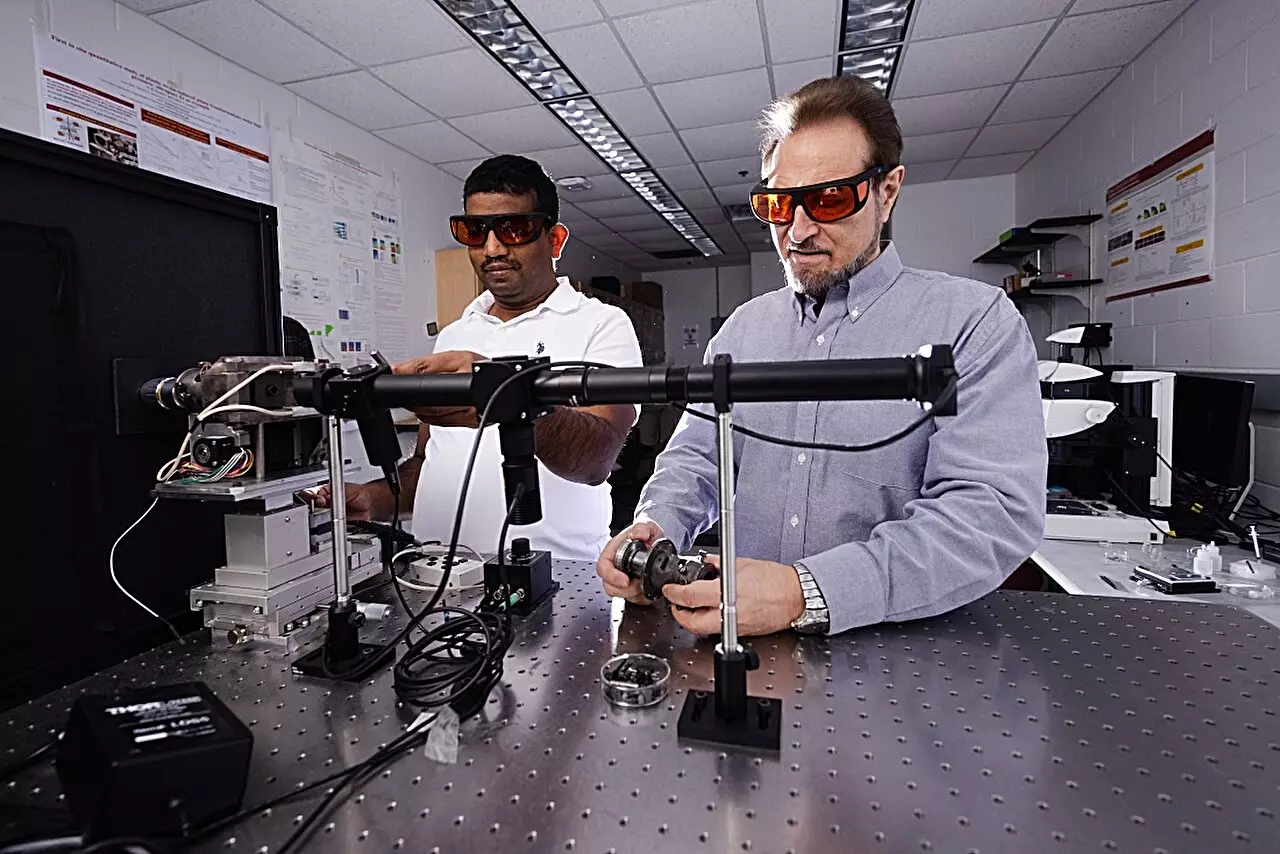The landscape of materials science has shifted profoundly since Valery Levitas brought a unique invention, the rotational diamond anvil cell (RDAC), from Europe to the United States in 1999. This innovative tool has allowed researchers to apply extreme pressure and shear forces to various materials, helping scientists glean insights into the very nature of these substances at the atomic level. Levitas, an esteemed professor at Iowa State University, has spent decades utilizing this advanced technology to probe the intricate behaviors of materials. His work not only melds disciplines such as mechanics, physics, and applied mathematics, but also carries significant implications for industries reliant on advanced material applications.
One of the most striking findings from Levitas and his team revolves around silicon—a fundamental material in the electronics industry. In their recent publication in *Nature Communications*, they explore how silicon undergoes unexpected phase transformations when exposed to both pressure and plastic shear deformation. Traditionally, studies on silicon have focused solely on its high-pressure behaviors, ignoring the significant interaction that plastic deformation can have on its structure and properties. The researchers’ groundbreaking discoveries challenge existing paradigms and open new avenues for understanding material behavior under various conditions.
The research involved systematically subjecting various sizes of silicon particles—from one millionth of a meter to 100 billionths of a meter—to the unique strains produced by the RDAC. The results were illuminating; for instance, one room-temperature experiment revealed that silicon’s Si-I crystal phase could be transformed into the Si-II phase at a pressure of only 0.3 gigapascals, a considerable reduction from the 16.2 gigapascals typically required to achieve this transformation under normal high-pressure conditions. Such findings underscore the researchers’ notion that substantial advancements can be made by exploring low-pressure realms, a territory often overlooked in the field.
At the heart of Levitas’s research is a focus not merely on the macro-scale alterations of material shape, but rather on the microstructural changes that facilitate phase transformations. Specifically, the researchers examined seven distinct phases of silicon, each offering unique properties that could be harnessed for various industrial applications. The promise of this technology lies in its ability to yield desired nanostructured materials or mixtures with optimized electronic, optical, and mechanical properties. This capability represents a potential game-changer for industries that could benefit from accessing high-pressure phases and properties without the burdensome need for traditional high-pressure processes.
Levitas articulates a vision where the approach employed in this research could dramatically change the landscape of materials engineering. By presenting a method to achieve desirable silicon phases with minimal pressure, this study could simplify the production process of advanced materials and make it more cost-effective for industrial applications. The practical aspects of working with lower pressures render this research not only innovative but also feasible for real-world applications, potentially streamlining how sophisticated materials are created and manipulated.
Valery Levitas’s groundbreaking work over the past two decades bears testament to the rich intersection of theory and experimental practice in materials science. By illuminating how silicon can respond to novel strains in a rotational diamond anvil cell, he has laid the foundation for future research that could unlock the vast potential of various materials. This study exemplifies how ongoing efforts at reducing transformation pressures can yield significant insights and innovations, cementing Levitas’s role as a pioneering figure in the quest to expand our understanding of material properties and applications. As this research progresses, we may find ourselves on the brink of revolutionary advancements that could reshape the technological landscape for years to come.


Leave a Reply